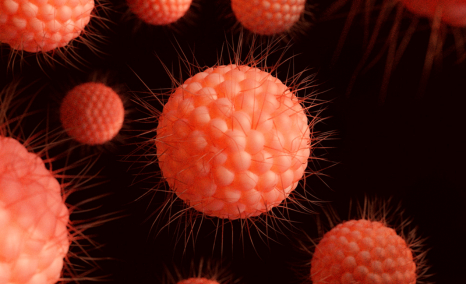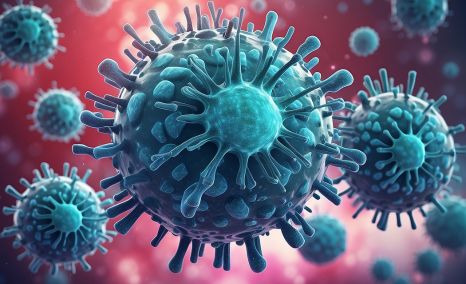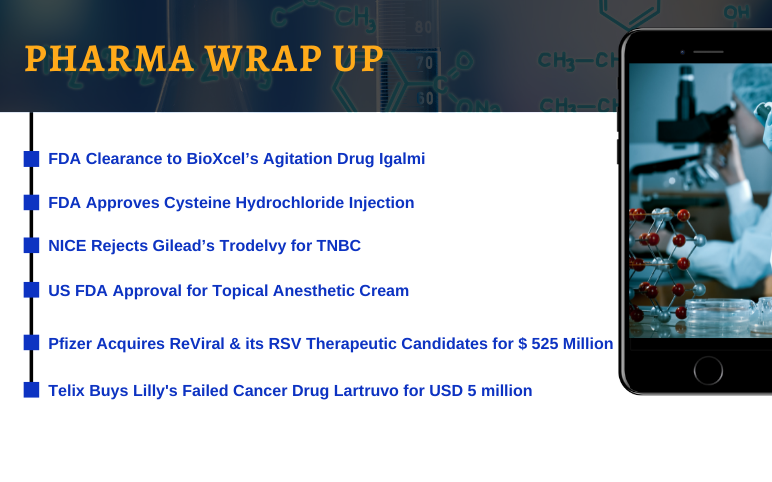Key Facts to Know About Triple-Negative Breast Cancer in Breast Cancer Awareness Month
Aug 08, 2024
Table of Contents
October, a month awash in pink, stands as a global testament to Breast Cancer Awareness Month. Pink ribbons flutter in the breeze, pink tee-shirts fill the streets, and pink banners drape buildings. This vibrant display of pink is more than a color; it’s a unified call to action, dedicating a month to raising awareness about breast cancer in women. Healthcare institutions, pharmaceutical giants, and dedicated federations all come together, driven by the shared vision of a cancer-free world.
The incidence of breast cancer is staggering, with over 2.3 million women worldwide receiving a diagnosis each year. Among the many types of breast cancer, a particularly formidable foe is Triple-negative breast cancer (TNBC), which accounts for 10-20% of all cases. Unlike other forms, TNBC is characterized by the absence of estrogen receptors, progesterone receptors, and excess HER2 protein. This unique profile makes it one of the most challenging subtypes to treat, highlighting the urgent need for increased awareness and innovative research.
Downloads
Article in PDF
Recent Articles
- Gordon and Betty Moore Foundation gives $85M; Omeicos raises; Sanofi signs deal; Lilly grabs
- BioXcel’s Agitation Drug Igalmi; FDA Approves Cysteine Hydrochloride Injection; Gilead’s Trodelvy...
- How CDK4/6 Inhibitors Are Changing the Cancer Treatment Paradigm?
- AstraZeneca’s AKT Inhibitor TRUQAP Falls Short in Triple Negative Breast Cancer
- Merck sells biosimilars; AbbVie’s PARP; Pharma heads; Biogen looks to M&A
During Breast Cancer Awareness Month, the world doesn’t just wear pink; it embodies a spirit of resilience and hope. Every ribbon, shirt, and banner becomes a symbol of the ongoing fight against breast cancer, reminding us of the importance of early detection, research, and support for those affected.
In layman’s language, normal breast cells have certain hormones and proteins for their proper development and function. Estrogen, a steroid hormone in women, is a principal sex hormone and also helps in the development of breasts, regulation of the menstrual cycle, thickening of the inner lining of the uterus, and nourishing breasts for lactation. Progesterone helps in breast development for proper breastfeeding and lactation. In a similar line, HER2 is a growth-promoting protein. Thus, in the case of breast cancer, breast cells have higher levels of either of these hormones, which leads to surmounted cell division and proliferation. However, in the case of TNBC, the cancerous cells test negative for all of these three receptors.
What Causes Triple-negative Breast Cancer?
So, the question arises what might be causing this uncontrolled, unwanted cell division? Well, there can be several reasons except elevating hormonal levels, which are more or less similar to the reasons causing other forms of breast cancer, such as the increase in age, family history, previous breast cancer diagnosis, reproductive history, radiation exposure, lifestyle habits such as alcohol consumption, cigarette smoking, obesity, or genetic aberrations (BRCA-1 and BRCA-2 mutations). Several studies point to unrelenting stress that is also associated with an increased risk of TNBC.
Who gets Affected by TNBC?
Triple-negative breast cancers have an early onset. Most people who are diagnosed with TNBC are younger than 50. Studies have shown that people who have a family history of breast or ovarian cancer are more likely to get diagnosed with TNBC. However, certain people, it seems, are more susceptible to developing TNBC. Epidemiology studies show that African-American or Hispanic populations are more likely to get TNBC as compared to other ethnicities. Furthermore, clinical outcomes of TNBC are comparatively worse in African American women as compared to European American women. The fact is backed by several pieces of research, one being led by Bowen and colleagues that interrogated a UK-based breast cancer cohort. The findings revealed that 22% of the total cases under review were black women with TNBC in comparison to 15% of white women.
In 2023, the total incident cases of triple-negative breast cancer (TNBC) in the US were approximately 45k, accounting for around 44% of TNBC cases in the 7MM, according to DelveInsight’s analysis. Among the EU4 countries, Germany reported the highest number of TNBC incidence cases, with approximately 11K cases, followed by France and Italy. Gene mutation-specific cases of TNBC in the 7MM revealed that BRCA1 mutations led to the highest number of cases at around 10K, while RAD51D mutations contributed to the least number of cases. Line-wise treated TNBC cases in the EU4 and the UK in 2023 included approximately 16K for first-line, 9K for second-line, and 5K for third-line and above. This data highlights the prevalence and incidence of TNBC, emphasizing the ongoing need for effective treatments and advancements in TNBC therapies.
There is also a notable correlation between breastfeeding and a reduced risk of TNBC. Studies have shown that breastfeeding can lower the risk of breast cancer by decreasing fat levels and reducing hormone levels, such as estrogen and progesterone, in the breasts. Additionally, breastfeeding lowers the risk of ovarian cancer by preventing ovulation, which may further decrease the risk of TNBC. Most TNBC patients with a family history of cancer inherit mutations in the BRCA1 and BRCA2 genes, which are linked to an increased risk of developing the disease.
What are the Similarities Between TNBC and Other Breast Cancer?
The symptoms of Triple-negative breast cancer often mimic those of other breast cancers. Common signs include breast cancer lumps, pain or redness in the affected area, nipple discharge, and skin discoloration. Despite these similar symptoms, the treatment approaches for TNBC are notably different. Triple-negative breast cancers fall into the category of hard-to-treat cancers, primarily because they are not influenced by receptors or hormones, rendering hormone therapy ineffective.
TNBC can be treated with surgery, radiation therapy, and chemotherapy, or a combination of these methods. Chemotherapies are the standard of care for Triple-negative breast cancer and are typically administered as neoadjuvant or adjuvant treatments, serving as both first and second-line options. Given the aggressive nature of TNBC, early detection of breast cancer lumps and the beginning of breast cancer rash can be crucial for improving outcomes.
The prognosis for Triple-negative breast cancer can be more challenging compared to other types of breast cancer. However, with advancements in treatment strategies and ongoing research, there is hope for better management and improved survival rates for those diagnosed with this tough-to-treat subtype.
What are the Recurrence Rates of TNBC?
Although the response to chemos is appreciable, the chances of relapse of cancer in TNBC are disturbingly high. After initial treatment, some of the rogue cancerous cells escape the wrath of medications or therapies, travel down through the lymphatic system, and then there is a chance of recurrence. There exist shreds of evidence that TNBC has a worse clinical outcome and a unique pattern of recurrence than other forms of breast cancer. After diagnosis, TNBC patients experience the highest chance of relapse of cancer within the first five years; however, if the patient is cancer-free for that duration, the chances of cancer relapse lower down significantly.
The Treatment of TNBC
There are a few FDA-approved targeted therapies for triple-negative breast cancer. Historically, chemotherapy has been the main systemic treatment for triple-negative breast cancer, particularly for patients with metastatic disease. Although TNBC tends to respond well to chemotherapy initially, recurrences are frequent. As a result, triple-negative breast cancer therapy often requires innovative approaches and continuous advancements to improve patient outcomes. If TNBC recurs locally and cannot be removed with surgery, and if it makes the PD-L1 protein, immunotherapy with the drug KEYTRUDA (pembrolizumab) combined with chemotherapy is an option. Other treatments may also be considered depending on the specific situation. If the cancer recurs in other parts of the body, options might include chemotherapy or the antibody-drug conjugate TRODELVY (sacituzumab govitecan).
What lies ahead?
Triple-negative breast cancer is comparatively aggressive and difficult to treat. It has a poor prognosis, and only a handful of the targeted therapies are available that can tackle TNBC. The rate of its metastasis further adds to the aches and pains associated with TNBC. Several studies have demonstrated that TNBC has higher chances to metastasize to other parts of the body, especially to the brain and lungs, and thus recur after the treatment. But, there has been a lot of activity going on in the TNBC domain. With the burden, Triple-negative breast cancer has poised in front of the world; no wonder the goal of effectively target it has taken the front burner. Past decades witnessed several therapies setting up their foot in the sector. The scientist community is vigorously testing PARP inhibitors, immunotherapies, and a combination of novel and preexisting therapies to treat TNBC.
Emerging Therapies for TNBC
Pharmaceutical and biotech companies in the Triple-negative breast cancer market are proactively working to develop and manufacture innovative therapies for this challenging condition. With several regional, national, and international institutions collaborating, the collective effort aims to bring a significant therapeutic advantage to TNBC patients. In the pipeline right now, there are several promising TNBC drugs and emerging therapies, including Camrelizumab by Jiangsu HengRui Medicine, SKB264 by Sichuan Kelun-Biotech Biopharmaceutical Co., Ltd., AK117 by Akeso Biopharma, PLX038 by ProLynx, and PMD-026 by Phoenix Molecular Designs, among others. This unified approach holds the promise of delivering efficient, effective, and safe treatments, transforming the outlook for those affected by Triple-negative breast cancer and instilling hope for a brighter, cancer-free future. As these TNBC treatments progress through clinical trials and regulatory evaluations, they represent a beacon of hope for more personalized and effective TNBC treatment options, aiming to improve patient outcomes and quality of life significantly.
Conclusion
Breast Cancer Awareness Month serves as a crucial time to highlight the unique challenges and advancements in the treatment of Triple-Negative Breast Cancer (TNBC). As one of the most aggressive and hard-to-treat subtypes, TNBC demands innovative and targeted therapeutic approaches. The collective efforts of pharmaceutical and biotech companies, along with global collaborations, are paving the way for promising TNBC therapies like Camrelizumab, SKB264, AK117, PLX038, and PMD-026. Despite the daunting prognosis associated with TNBC, the ongoing research and development of these therapies offer a beacon of hope. By raising awareness and fostering a unified approach, we can significantly improve the outlook for those affected by TNBC, ultimately transforming the prognosis and quality of life for patients worldwide. This Breast Cancer Awareness Month, let us renew our commitment to supporting the fight against TNBC and celebrating the strides made toward a future where breast cancer is no longer a life-threatening diagnosis.

Downloads
Article in PDF
Recent Articles
- BioXcel’s Agitation Drug Igalmi; FDA Approves Cysteine Hydrochloride Injection; Gilead’s Trodelvy...
- Sage’s drug meets phase 3; Blocking 2 key pathways help in tackling TNBC; FDA clears Paragonix; F...
- New Therapeutic advances that have shifted the Breast cancer market scenario
- How CDK4/6 Inhibitors Are Changing the Cancer Treatment Paradigm?
- Zogenix acquires Modis Therapeutics; Amgen buys Otezla; CRISPR slows down the Breast cancer rate



